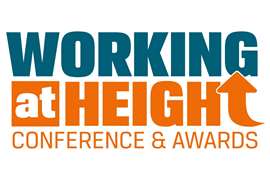The global top 10 causes of disputes and claims on major projects
16 October 2024
 Image: Generated with AI by ParinApril via AdobeStock
Image: Generated with AI by ParinApril via AdobeStock
The global construction industry may have had to grapple with a new set of geopolitical and economic shocks in the last few years, but major projects are still being derailed by the same old set of failures.
That’s one of the findings from the latest CRUX Insight report, which analyses the level of claims across big international construction projects and the causes of disputes.
This year’s report identified the global top 10 causes of claims or disputes, as well as splitting them up by region. Across the world as a whole, the top 10 causes in descending order were:
- Change in scope (seen on 36.9% of projects)
- Design was incorrect (21.5%)
- Design information was issued late (21.4%)
- Design was incomplete (19.8%)
- Contract management and/or administration failure (18%)
- Poor management of subcontractor/supplier (17.9%)
- Contract interpretation issues (17.8%)
- Workmanship deficiencies (17.7%)
- Access to site/workface was restricted and/or late (16.8%)
- Physical conditions were unforeseen (16.6%)
The list is based on data from 2,002 projects from 107 countries across the world as well as first-hand experiences of consultants from claims advisory and dispute resolution company HKA, which commissioned the report.
Taken together, the projects studied account for a capital expenditure (CapEx) value of nearly US$2.3 trillion, with an average CapEx budget of $1.28 billion each.
The total value of sums in dispute across all of the projects studied was $84.4 billion and in terms of time, the cumulative length of extensions sought by contractors would reach beyond 994 years.
At a project level, the average claimed costs and programme overruns were at a similar level to last year. The average schedule overrun on a project remained at 16 months and equivalent to two-thirds (66.5%) of the planned schedule (as compared to 67.1% in last year’s report).
Additional costs claimed amounted, on average, to just under one third (33.2%) of a contract’s budgeted CapEx, which was very close to last year’s figure of 33.6%.
‘Damaging pattern needs to change’
Renny Borhan, chief executive officer of HKA, said the ongoing struggle to keep a lid on budgeted costs and the planned schedule was a “damaging pattern the capital projects and infrastructure sector needs to change”.
This year’s report focuses on five inter-related ‘mega-disruptors’ that cause what it calls “project distress”. They are: contractual conflicts, the desire to ‘speed the build’, stakeholders’ behaviours, skills-related challenges, and the growing environmental risks facing projects (in terms of increased official scrutiny, regulation and litigation).
To ward off contractual disputes, HKA’s report recommended a more proactive and pragmatic approach to contract management, which could involve the co-funding of mitigation measures to minimise delays, as well as conflict avoidance procedures and dispute advisory boards.
The report also recommended early contractor involvement (ECI) to help validate designs and promote de-risking.
ECI was also put forward as one of the main solutions to the problems presented by clients putting pressure on the design and build process to go as quickly as possible. It highlighted the danger of starting both simultaneously, which it cautioned was a recipe for changes in design and scope. Instead, the report encouraged the mantra of ‘Go slow to go fast’, with ECI as a means to stress-test designs and schedules.
When it came to the widely publicised problem of skills shortages (which can affect everything from design- and client-side management to operational performance on site) hampering projects, the report recommended reviving the neglected role of a resident engineer on the client side and reconciling scopes to fill gaps between the design team, engineer and contractor.
The report also suggested that unreasonable behaviours on projects tend to be driven by monetary pressures. In particular, it noted that lowest-price tendering drivers defensive and aggressive tactics and that employers have the power to shape better behaviour by changing the way in which they tender projects. Meanwhile, contractors should not be tempted to be over-optimistic about budgets, it warned.
And on environmental issues, the report recommended that contracting parties review and revise how contracts cater for extreme weather events under force majeure, as well as taking a comprehensive approach to assessing damage from unforeseen contamination using environmental, commercial and economic expertise.
To download a full copy of the report, click here.
MAGAZINE
NEWSLETTER
The gold standard in market research
Off-Highway Research offers a library of more than 200 regularly updated reports, providing forensic detail on key aspects of the construction equipment industry.
Our detailed insights and expert analyses are used by over 500 of the world’s largest and most successful suppliers, manufacturers and distributers, to inform their strategic plans and deliver profitable growth.








